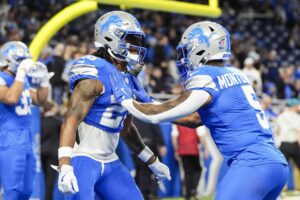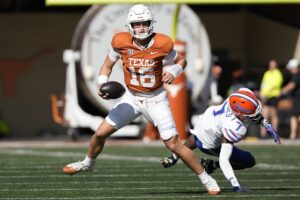It’s common knowledge that NFL teams only go as far as their quarterback will take them. Every Super Bowl winning team has a franchise quarterback, and the Giants are no exception. Eli Manning, now at 36 years of age, is entering his 14th year in the NFL. However, Giants fans are hopeful that the four-time Pro Bowler and two-time Super Bowl MVP has one or two more good runs left in him.
But what do the Giants need to do to help Manning have success? Surely Manning has enough statistics over his 13 years as a starting quarterback to show some sort of pattern for success. What does it say about the offense they need to run? How often should they pass vs. run? Well, after looking through the statistics of the Giants since 2005, Manning’s first full year as a starter, I’m ready to share my findings.
What New York Giants Historical Stats Say About How Team Can Succeed in 2017
The offense the Giants need to run in 2017 for the team and Manning to be successful is…whatever they want. Over Manning’s career as the starter, he has had success in multiple types of offenses, with a variety of different skill players around him. It doesn’t matter if the Giants throw the ball under 500 times or more than 600 times, Manning has had success with both. However, there were a couple of statistics that did stand out when comparing good seasons for the Giants to bad seasons over the past 13 years.
The first and only offensive statistic that came up was how much of a workload the second running back for the Giants had. In good seasons for the Giants, the number two back averaged 126 carries and 596 yards per year. While in bad seasons the number two back averaged a little over 109 carries and 381 yards per year. When the secondary back carried the ball at least 112 times, the Giants have a 71.4% chance of having a winning season according to previous statistics. It didn’t matter what the primary back did either. In the good seasons, the primary back ranged from 593 to 1,860 net yards gained on the ground. The only thing that seemed to matter was how much of an impact the secondary back had.
Obviously, this doesn’t mean that if the Giants feed their secondary back the ball more per game that the Giants are going to win more. What it does show is that the Giants are a better team when they have two solid options at running back who are both able to contribute. With last year’s secondary running back, Paul Perkins, looking to become the primary back, it will be an interesting battle between Shane Vereen, Orleans Darkwa and 2017 fourth round pick, Wayne Gallman, to see who can win that all so important secondary spot.
The other statistic that came up is going to be less of a surprise for Giants fans. The Giants, over the last 13 years, have lived and died with the pass rush. During good seasons, the Giants averaged 44.2 sacks per year. On the other side, in bad seasons they averaged 34.7 sacks per year. That’s almost a ten sack per year difference. However, what made this interesting was the pass rusher who had the most impact.
Looking at the statistic mentioned before, most people would think the same thing, “Just go get a premier pass rusher.” That person wouldn’t be wrong, but a premier pass rusher can’t do it alone. Of the bad seasons, 66.7% of them had a pass rusher who achieved ten sacks per year or more. What those teams lacked was a secondary pass rusher. During good seasons the secondary pass rusher averaged 9.5 sacks per year while they only averaged 5.3 on a bad year.
Like the rushing statistic, it doesn’t matter how many sacks the primary pass rusher has. Last year the team sack leader, Olivier Vernon, only had 8.5 sacks. But, because the secondary pass rusher, Jason Pierre-Paul, produced seven sacks, the Giants were able to win consistently. Since 2005, if the secondary pass rusher produces seven or more sacks there is an 87.5% that the Giants will have a winning season.
Although it’s surprising, the Giants don’t live and die by their franchise quarterback. Manning had two of his most successful years in 2014 and 2015, yet both of those teams ended up 6-10. According to historical statistics, the Giants live and die by running back depth and pass rush depth. Luckily for the 2017 Giants, it looks like they have both.






